Answer these simple questions and we will find you the BEST prices
Which type of solar quotes do you need?
It only takes 30 seconds
100% free with no obligation

Get Free quotes from insulation specialists near you

Save money by comparing quotes and choosing the most competitive offer

The service is 100% free and with no obligation
- GreenMatch
- Insulation
- Insulating Your House
How to Insulate Your House: Your Complete Guide

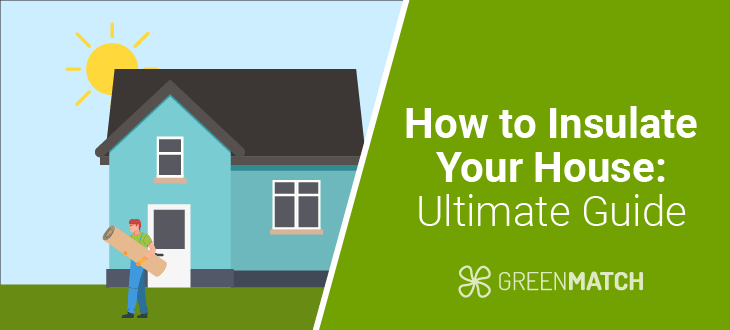
- Every £1 out of every £3 spent in the UK goes towards heating poorly insulated homes.
- The cost to install insulation for an entire three-bedroom semi-detached house is approximately £12,930.
- The walls and roof of your home lose the most energy, with your walls losing 35% and your roof losing 25%.
- You can save up to £340 on energy bills by insulating your attic and up to £500 on wall insulation.
- Draught-proofing your house, improving the insulation of your hot water tank, and adding insulation to your pipes and radiators are cost-effective ways to insulate your house.
- Only a professional should carry out more complex insulation installations, such as walls and floors.
Over 21 million homes in the UK are poorly insulated, leading to up to a quarter of heat loss each year. With energy prices remaining high in the UK and expected to rise in 2025, a substantial amount, about £1 out of every £3, is spent on heating homes, as reported by GOV.UK. Moreover, a study by the Resolution Foundation revealed that approximately 25.9% of the UK's carbon footprint is attributed to heating their homes.
Insulating your home can significantly reduce your energy bills by enhancing heating efficiency and lowering your carbon footprint. This guide will equip you with essential knowledge about home insulation, including identifying areas that require insulation and recognising those with inadequate insulation.
It will also offer cost-effective tips, do-it-yourself methods, and professional options, enabling you to make informed decisions that best meet your needs and budget. Whether insulating a new build or retrofitting an older home, this guide will empower you to create a more energy-efficient, comfortable, and environmentally friendly home.
Understanding how to insulate your house is crucial, but it's only the first step. To ensure successful insulation, you need to collaborate with trusted professionals. Finding the right professionals can be time-consuming and sometimes yield no results. Fortunately, GreenMatch can provide four free quotes from local and trusted insulation specialists. Fill out our 30-second form to obtain these quotes without hidden fees or obligations. Click below to learn more.
Fill in the form in just 1 minute
In which areas should you insulate your home?
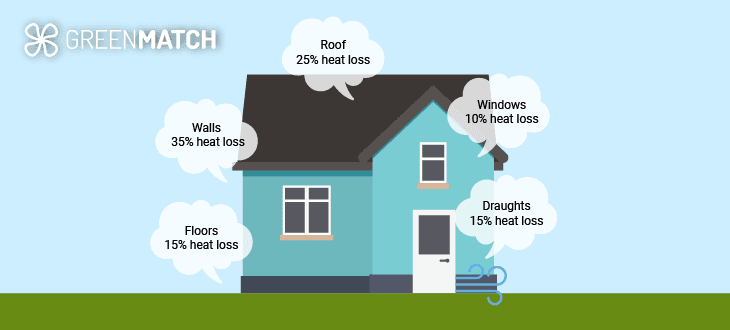
When learning how to insulate your house, it's crucial to focus on critical areas where heat loss or gain is most significant. According to the latest research from MFS, there are 29.9 million homes in the UK. This means that over 70.23% of homes have poor insulation, with some homes, especially period homes, having no insulation.
While updating the insulation throughout your home can be costly, focusing on specific key areas can help minimise significant heat loss. Identifying these critical areas will allow you to prioritise which parts of your home to insulate first, thus maximising energy efficiency. Below are the key areas and the percentage of heat loss attributed to poor insulation.
Loft and roof insulation
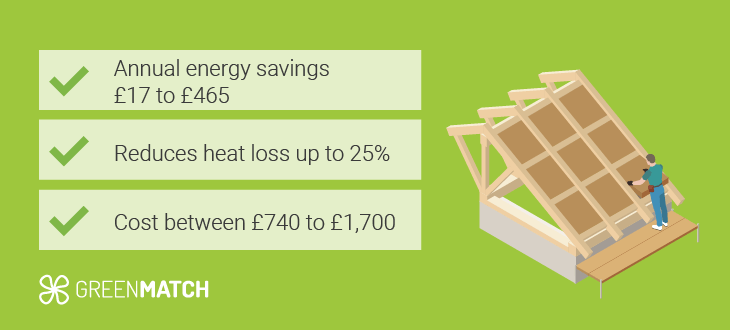
Loft insulation is crucial for reducing heat loss by creating a thermal barrier that prevents heat from escaping through the roof. A poorly insulated roof can cause up to 25% of energy loss, emphasizing the importance of effective insulation.
The two primary methods for loft insulation are cold loft insulation and warm loft insulation.
- Cold loft insulation involves placing insulation between and over the ceiling joists directly above the rooms below. This keeps living spaces warm while leaving the loft unheated. It is cost-effective but has a colder loft, making it less suitable for storing temperature-sensitive items.
- Warm loft insulation insulates the entire loft space, including insulating loft rafters, to warm the loft and living areas. It allows the loft to be used as additional living space or storage. It is more expensive and complex to install, requiring more insulation material and careful attention to ensure proper insulation of the entire roof.
When learning how to insulate your house, it's also important to insulate the loft hatch to prevent heat loss, but be sure not to block the eaves to maintain good ventilation and avoid moisture build-up. The cost of loft insulation can range from £740 to £1,700, depending on roof type, insulation material, property size, location, and existing insulation.
- Polyisocyanurate (PIR) boards
- Polystyrene (EPS) boards
- Polyurethane (XPS) boards
- Mineral wool
- Spray foam
- Fibreglass
- Cellulose
- Sheep’s wool
Fibreglass is the most cost-effective option, costing around £10 per m2. In contrast, PIR boards, which have the highest R-value, cost approximately £12.50 per m2. Sheep's wool, the most sustainable choice, costs about £19.75 per m2.
The initial cost of loft insulation can be significant. Still, it can save you between £270 and £445 annually on energy bills, depending on your current insulation levels. Homes with less insulation will see the most significant savings.
Below are the average savings based on property type in Scotland, Wales, and England:
| Property type | Average savings range per year |
|---|---|
| Mid-terrace | £17 to £180 |
| Semi-detached | £19 to £200 |
| Detached | £30 to £340 |
| Detached bungalow | £30 to £340 |
In Northern Ireland, the savings differ slightly:
| Property type | Average savings range per year |
|---|---|
| Mid-terrace | £25 to £255 |
| Semi-detached | £25 to £285 |
| Detached | £45 to £475 |
| Detached bungalow | £45 to £465 |
Wall insulation
Proper insulation for walls can lead to significant heat savings in your home. On average, poorly insulated walls can lose up to 35% of heat. On average, poorly insulated walls can lose up to 35% of heat. Like loft insulation, there are various materials to choose from based on personal preferences and budget.
- PIR boards
- EPS boards
- XPS boards
- Fibreglass
- Mineral wool
- Cellulose
- Sheep wool
- Cork boards
There are two main types of wall insulation: solid wall insulation and cavity wall insulation. Understanding wall types, materials, and identification is essential when learning how to insulate your house effectively.
Solid wall insulation
This type of wall is typically found in homes built before the 1920s. It has no gaps between the inner and outer layers. Although only 30% of walls in the UK are solid walls, a staggering 97% of them are uninsulated, highlighting the importance of understanding how to insulate your house effectively.
You can examine the brick pattern if you need help determining whether your home has a solid wall. The brick pattern often indicates the type of wall. Solid walls typically have an alternating pattern, with some bricks laid across the wall so that the smaller ends are visible from the outside.
There are two methods for insulating solid walls in your home: external and internal insulation, both crucial aspects of how to insulate your house.
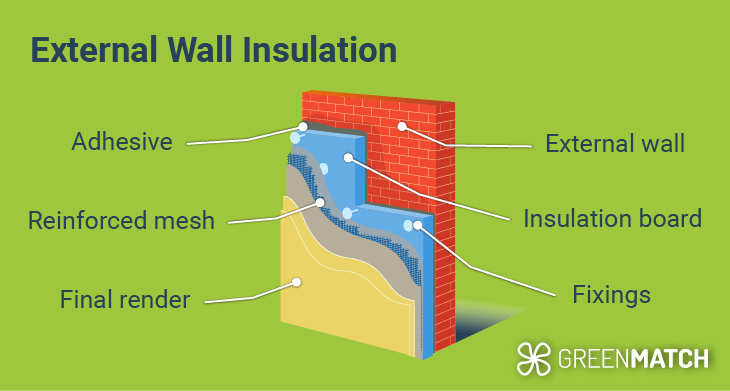
- External Insulation: Insulating material is attached to the exterior of the wall and then covered with a protective layer, such as render or cladding insulation. This method is highly effective but can alter the appearance of your home.
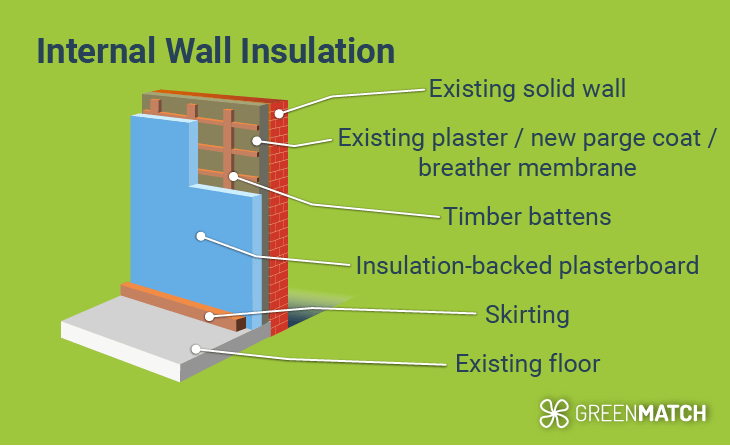
- Internal Insulation: Installers fix insulation boards or plasterboard backed with insulation to the inside of the walls. This method slightly reduces the room size but maintains the building’s external appearance.
You can use all wall insulation materials for internal insulation, but only four types suit external insulation: cork, PIR, XPS, and EPS boards. These materials are durable, water resistance, and fire-retardant properties. They must also be compatible with your home's exterior finishing systems.
The average cost for external insulation on a three-bedroom house is around £11,000, while the cost for internal insulation is approximately £7,500. Even though the initial investment is relatively high, wall insulation can lead to substantial energy bill savings. Below, we will demonstrate the potential savings on various property types across England, Scotland, and Wales.
| Property type | Average savings range per year |
|---|---|
| Mid-floor flat | £140 |
| Mid-terrace | £170 |
| Detached bungalow | £220 |
| Semi-detached | £290 |
| Detached | £500 |
In Northern Ireland, the savings differ slightly:
| Property type | Average savings range per year |
|---|---|
| Mid-floor flat | £190 |
| Mid-terrace | £240 |
| Detached bungalow | £305 |
| Semi-detached | £405 |
| Detached | £700 |
Cavity wall insulation
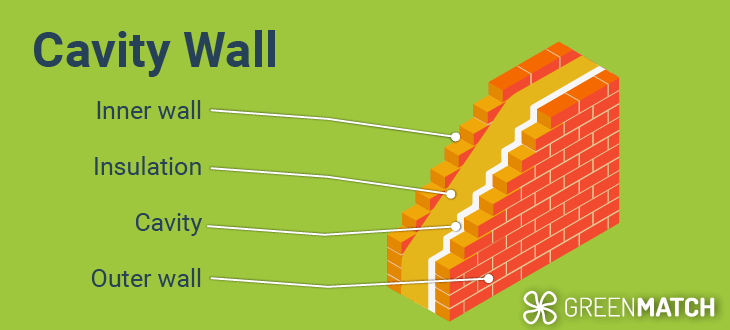
Cavity wall insulation is commonly found in homes built after the 1920s, with over 71% of homes in the UK having this type of wall. These walls have a cavity between layers that can be filled with insulation to improve energy efficiency in your home. Insulation is injected into the cavity through small exterior holes, which are then filled and sealed.
Like solid walls, you can identify whether you have a cavity wall by the brickwork on your home. These walls typically feature a uniform "stretcher bond" pattern, indicating a cavity between the two brickwork layers.
If brickwork covers your home, you can check the wall type by measuring its width. A cavity wall is usually 260mm or more in width, whereas a solid wall tends to be thinner.
In England, Scotland, and Wales, the average cavity wall insulation cost is between £1,000 and £4,600, depending on your home type. Below are the average energy savings costs of cavity wall insulation:
| Property type | Average savings range per year |
|---|---|
| Mid-floor flat | £100 |
| Mid-terrace | £130 |
| Detached bungalow | £160 |
| Semi-detached | £210 |
| Detached | £370 |
In Northern Ireland, the average cost of cavity wall insulation is between £560 to £1,300 which depends on the property type you have. Below are the average energy saving costs in Northern Ireland:
| Property type | Average savings range per year |
|---|---|
| Mid-floor flat | £140 |
| Mid-terrace | £175 |
| Detached bungalow | £225 |
| Semi-detached | £300 |
| Detached | £520 |
Floor insulation
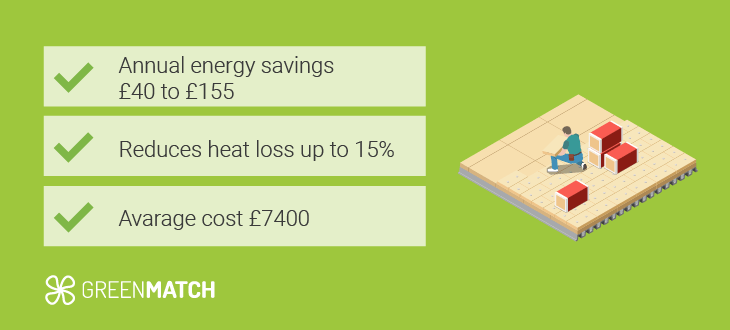
Floor insulation can prevent up to 15% heat loss, crucial for a warmer, more energy-efficient home. Depending on your floor type—solid or suspended—you will either insulate above or below the floor deck.
Understanding how to insulate your house effectively starts with determining the type of flooring, which you can do by examining the basement or cellar. If it's a suspended wooden floor, you should be able to see wooden joists and the undersides of the floorboards. If you can't access a basement, lift a corner of your carpet to check the type and insulate correctly.
Floor insulation costs around £4,700, varying by floor size, materials used, and floor type. The most common type of material used for floor insulation includes:
- Rigid insulation sheets
- Polyurethane spray
- Mineral wool
- Rubber
- Insulating screed:
- Fibreglass
- Carpeting
Solid floors, commonly made from cement, are the most prevalent type of floor in modern UK homes. Their dense material slows heat transfer, reducing heat loss from inside the house to the ground. However, insulating solid floors can be costly and challenging. You typically need to lay insulation material on top, which can raise the floor level and cause issues for doorways and staircases.
Suspended floors are commonly made from timber and are frequently found in older homes. They consist of floorboards placed across joists with a gap underneath. If this gap is uninsulated, cold air can circulate, leading to drafts and significant heat loss. Netting or battens hold the insulation in place, and the floorboards are then replaced.
Insulating solid or suspended floors is key to effective home insulation and can reduce energy bills. See the average yearly savings in England, Scotland, and Wales:
| Property type | Average savings range per year |
|---|---|
| Mid-terrace | £40 |
| Semi-detached | £60 |
| Detached | £110 |
| Detached bungalow | £100 |
In Northern Ireland, these savings differ slightly:
| Property type | Average savings range per year |
|---|---|
| Mid-terrace | £60 |
| Semi-detached | £85 |
| Detached | £145 |
| Detached bungalow | £155 |
Other areas that may necessitate insulation
Other areas in your home, beyond walls, floors, and roofs, can benefit from insulation to improve energy efficiency and comfort. Addressing these areas can help reduce heat loss, prevent moisture issues, and even improve soundproofing. Here are some additional areas in how to insulate your house:
Window insulation
Poorly insulated windows can lead to up to 10% heat loss in your home, making it essential to understand how to insulate your house effectively. Insulating your windows can minimise drafts, reduce noise, and maintain a consistent indoor temperature throughout the year. Below are the ways how to insulate your home through your windows.
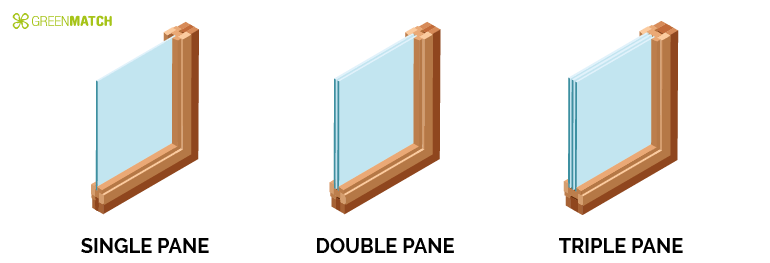
Double or triple glazing involves installing windows with two or three panes of glass, separated by a layer of air or gas, such as argon, which acts as an insulating barrier. Triple glazing provides even better insulation and soundproofing than double glazing. However, on average, a set of A-rated windows for a semi-detached house will typically cost around £15,000. If the cost is not within your budget, other ways exist to improve your window's energy efficiency.

Window films are thin, transparent sheets that can be applied to the interior of your windows. These films can reduce heat loss by reflecting radiant heat into the room while allowing natural light to enter. They are less effective than double or triple glazing but are affordable, with prices ranging between £15 to £50 per m2.
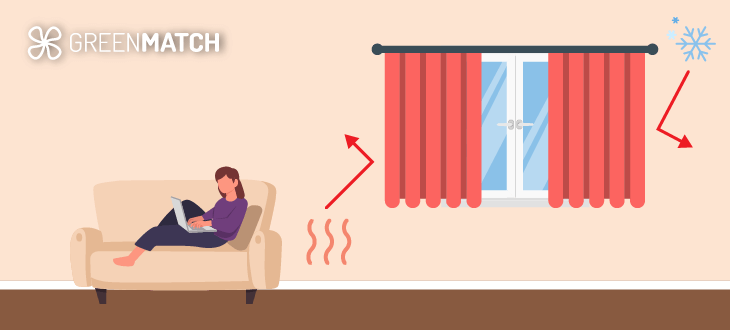
Thermal curtains and blinds use thick, insulated fabrics to keep heat inside during winter and block it during summer. You can install these affordable window treatments on existing windows. However, you must close them to insulate effectively, which can reduce natural light during the day.

Secondary glazing entails adding an extra glass or acrylic pane to the inside of an existing single-glazed window. This method creates an insulating layer without replacing the original window. It is a less expensive alternative to double glazing and typically costs between £250 to £500 per window. This solution is especially useful in historic or listed buildings, where regulations prohibit replacing the original windows, making it crucial in insulating your house.
Draught-proofing insulation
Draught-proofing is one of the most cost-effective ways to reduce energy loss in your home. To draught-proof your home, all you have to do is block out gaps where cold air comes in, and hot air goes out. However, ventilation is crucial in your home, so it's important not to seal up intentional ventilation such as extractor fans, wall vents, trickle vents, or air bricks.
On average, draught-proofing windows and doors can save you between £35 to £50 per year. Several areas in your home can benefit from draught-proofing, including:
- Windows: You can improve your home's thermal efficiency by adding adhesive foam, metal, or plastic strips around the window frame.
- Doors: You can draught-proof your doors in several ways. This includes adding keyhole covers, using a letterbox brush to prevent air from getting through, and applying strips around the edges of your doors similar to the ones used for windows.
- Chimneys: To prevent heat loss from your chimney, you have two options: a chimney draught excluder, an inflatable bag that fits into the chimney, or a cap to the pot. Both methods can help you save between £50 and £70 per year on energy bills.
- Floorboards and skirting boards: Fillers such as caulk, mastic-type products, or flexible fillers can block out cracks or gaps in your floorboards and skirting boards.
- Loft hatches: Draught-proofing your home and loft area requires strip insulation similar to that used on doors and windows.
- Pipes: Using silicone fillers around your pipes can help seal up the gaps between your pipes.
- Cracks in walls: Old walls may develop cracks, which can increase draughts in your home. You can fill these cracks with cement or hard fillers.
Hot water tank insulation
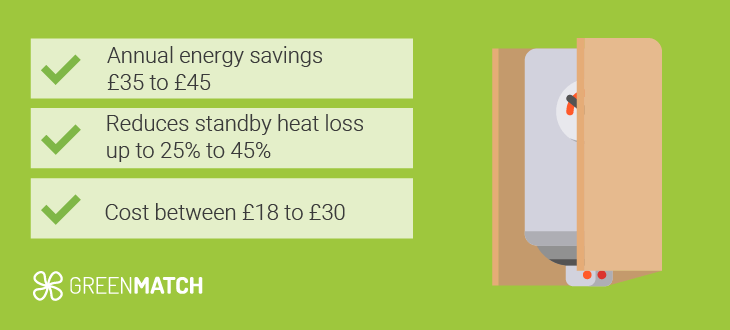
A hot water tank is another effective method for how to insulate your house and improve overall energy efficiency. Hot water tanks naturally lose heat as water sits, especially when located in cooler areas like a loft or basement. Insulating the tank involves wrapping it in an insulating material to reduce heat loss. According to Energy.gov, insulating a hot water tank can reduce standby heat loss by 25% to 45%.
Insulating jackets are the most effective way to enhance the energy efficiency of your hot water tank. Made from fiberglass, foam, or reflective foil, these jackets are designed to wrap around the entire tank. They cost about £18 in England, Scotland, and Wales and £30 in Northern Ireland.
Using insulating jackets will help insulate your house and reduce energy bills.
In Great Britain, you could save up to £35 annually, while in Northern Ireland, savings could reach up to £45. For optimal effectiveness, it’s important to ensure that these jackets are at least 80mm thick, as recommended by the Energy Saving Trust.
Radiator insulation
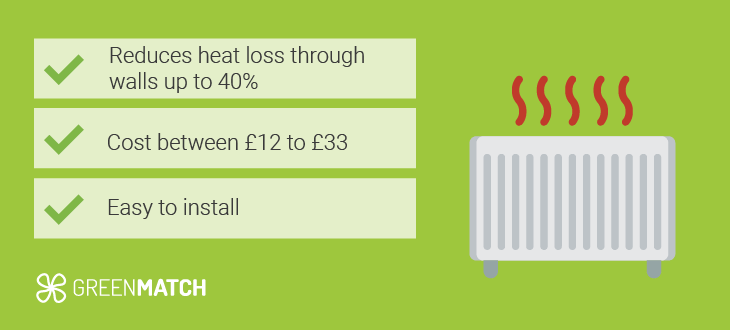
When learning how to insulate your house, it's essential to consider the role of radiators in maintaining a comfortable temperature. Radiators emit heat into a room, but when mounted on external walls, they can absorb and lose significant heat to the outside, especially if the wall is poorly insulated.
According to Eco Home, up to 40% of the heat from your radiators can be lost through the walls. You can prevent this heat loss by insulating your radiators, which can be easily accomplished by placing reflective foil behind them.
The most common type of radiator insulation is reflective foil, a thin metallic sheet placed behind the radiator. This foil reflects heat into the room, minimising the amount absorbed by the wall. This is an inexpensive, easy-to-install solution. Cut to fit behind any radiator, it effectively reduces heat loss and improves efficiency. Depending on the size and thickness of the foil, you can expect to pay between £12 to £33 for reflective foil insulation.
Pipe insulation
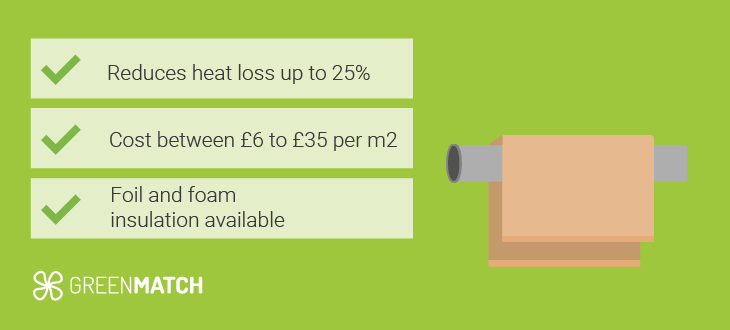
When insulating your house, don’t overlook the importance of pipe insulation. It helps maintain the temperature of the water as it travels through the pipes, contributing to a more energy-efficient and comfortable home. Pipe insulation also prevents outdoor pipes from freezing, which can save on costly repairs.
There are two main types of pipe insulation you can choose from for your home:
- Foil insulation, or reflective foil insulation, is a thin, metallic material wrapped around pipes to reflect heat into the pipe. This type of insulation is lightweight, easy to install, and effectively reduces heat loss from hot water pipes. Additionally, it is resistant to moisture and can be used in various environments.
- Foam pipe insulation is the most commonly used type of pipe insulation. It is made from flexible, closed-cell polyethylene foam or rubber, which can be easily cut and fitted around pipes of different sizes. This type of insulation is affordable, easy to install, and offers good thermal insulation. It is especially effective for both hot and cold water pipes.
On average pipe insulation costs around between £6 to £35 per m2 and can reduce heat loss up to 12% making it an effective and cost-efficient way to insulate your home.
How to identify your home's problem areas to install insulation?
Understanding how to insulate your house effectively starts with identifying the key areas where insulation is most needed. By pinpointing these problem areas, you can prioritise your efforts, focusing on the spots that will impact your home’s energy efficiency and comfort. Below are some practical ways and tips to help you determine where insulation might be required.
Inspect attic and loft
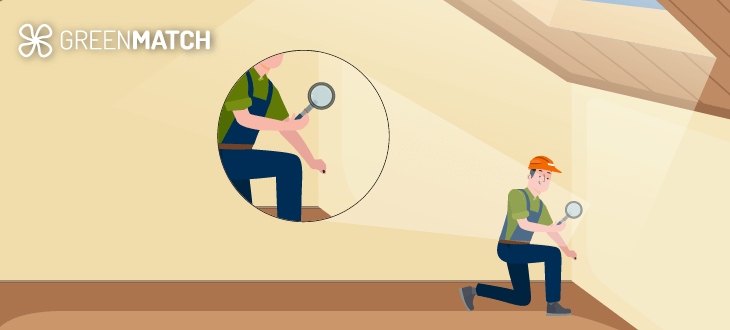
Attics are a significant cause of heat loss if not adequately insulated, making it essential to consider how to insulate your house effectively. Check the attic floor to ensure the insulation is evenly spread and thick enough. Look for any gaps, compression, or signs of moisture damage, which may indicate the need for more insulation. Also, inspect your roof. Insufficient insulation in your roof may cause snow to melt or ice dams to form, leading to heat loss and unnecessary energy waste.
Check walls and windows
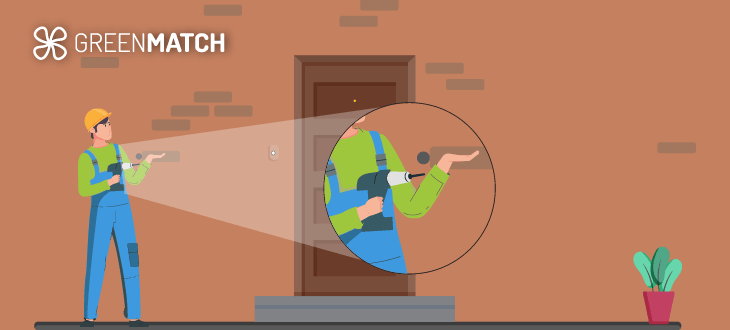
Many older homes, particularly those constructed before the 1920s, might have minimal or no wall insulation, making it crucial to learn how to insulate your house effectively. To inspect, you can drill a small hole in an inconspicuous place, such as a closet wall, to check for insulation. Additionally, you can hire a professional to use an infrared camera to identify insulation gaps. To check your windows, look for drafts, condensation, or cold spots near them.
Examine floors
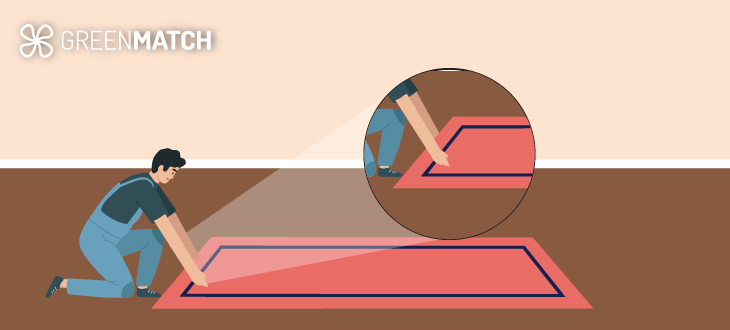
Cold floors can indicate inadequate insulation beneath them, particularly in homes with suspended floors. Inspect the basement beneath your floors to see if there is insulation between the joists. If you do not have a basement pull up a corner of the carpet and underlay to check the type you have. Add insulation if you notice cold drafts or significant temperature differences.
Check R-value of insulation
If your home already has some insulation, assessing its effectiveness is essential. Insulation can settle over time, reducing its efficiency. Inspect the areas where insulation is present and determine if it needs to be topped up or replaced.
Evaluate doors and doorways
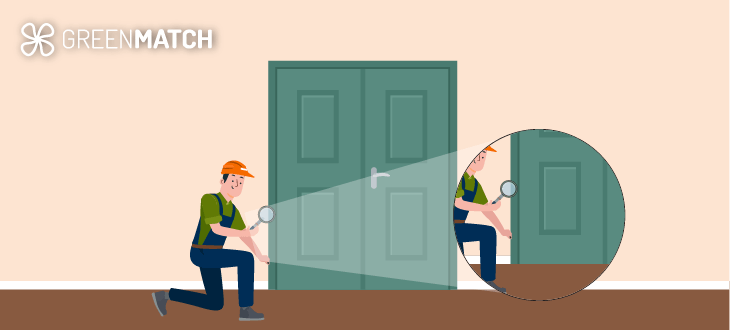
Check for gaps around the door frame and feel for drafts. Adding weatherstripping or door sweeps can help seal these gaps and improve insulation. Other entry points, such as chimneys, vents, and pipes, can also allow heat to escape. Ensure that these areas are properly sealed and insulated to prevent energy loss.
Conduct an energy audit

Hiring a professional to conduct an energy audit is one of the most comprehensive ways to identify insulation needs. An energy auditor will use tools like infrared cameras and blower doors to detect areas of heat loss, drafts, and inadequate insulation. On average, this can cost between £60 to £120. While it is more cost-effective to identify your home's problems yourself, using a professional is the quickest and most accurate way to determine your home's problem areas.
Should you go for DIY insulation installation or professional?
When considering how to insulate your house, one of the key decisions you’ll need to make is whether to tackle the insulation installation yourself or hire a professional. Both options have their advantages and drawbacks, and the best choice depends on your specific needs, skills, and budget. Here’s a breakdown to help you decide which route to take.
Areas of the house you can insulate yourself
While some parts of your home might require professional expertise, many areas are accessible and manageable for homeowners eager to take on the task themselves. Here's a guide on how to insulate your house, focusing on areas you can easily insulate on your own:
Loft space insulation
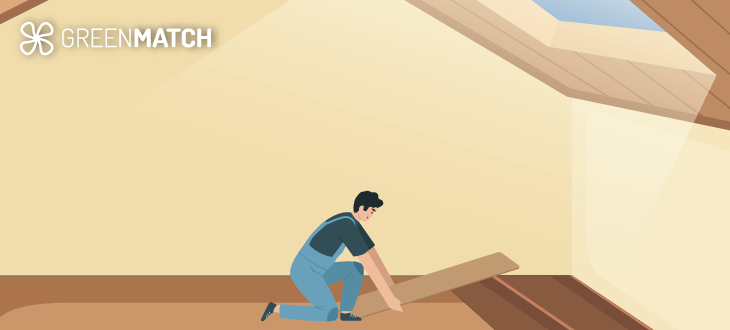
Insulating your loft is one of the most straightforward DIY projects. You can insulate your home from the inside using the cold roof insulation method which involves insulating the attic floor and is particularly easy for homeowners to tackle. While DIY enthusiasts can also do warm roof insulation, it's important to note that the Energy Saving Trust advises against insulating a flat roof yourself, as a professional assessment is necessary before beginning any work.
Loft hatch insulation
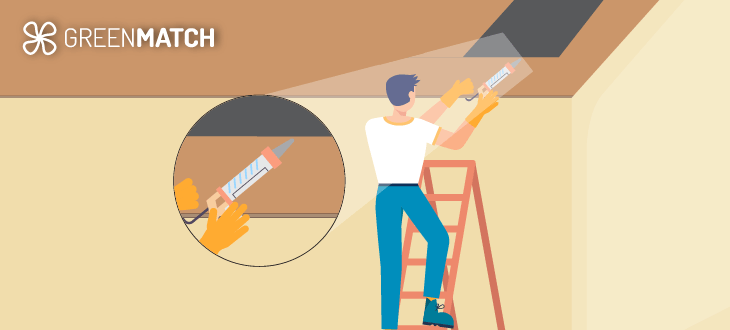
Loft hatch insulation is a simple DIY project that involves attaching rigid foam board or insulated plasterboard to the hatch and sealing the edges with weatherstripping. These tasks require minimal tools and skills, making improving your home's energy efficiency easy and cost-effective.
Radiator insulation
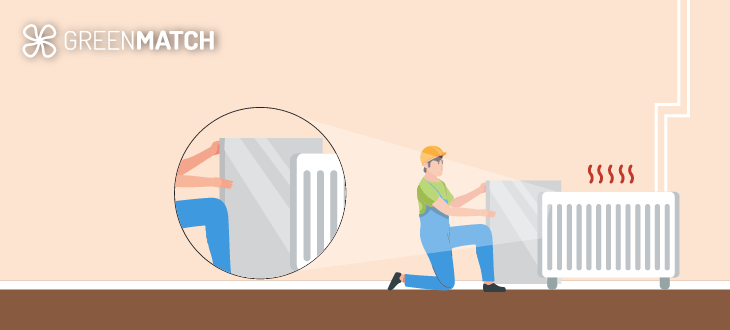
Radiator insulation is another DIY-friendly project. It typically involves placing reflective foil behind the radiator to reflect heat into the room, which requires minimal tools and skills. This easy-to-implement method effectively enhances energy efficiency with little effort or expense, making it an accessible option for most homeowners.
Hot water tank insulation
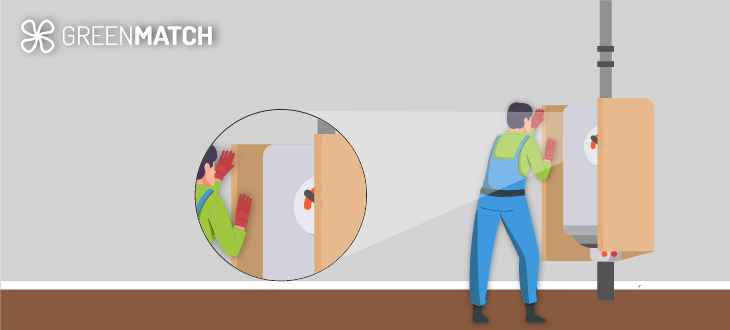
Hot water tank insulation is a project you can easily do yourself. It usually involves wrapping the tank with an insulating jacket, which is straightforward to install and requires basic tools. By following simple instructions, homeowners can significantly reduce heat loss from the tank, improving energy efficiency and saving on utility bills—making it a practical and cost-effective way to enhance your home's energy performance.
Pipe insulation
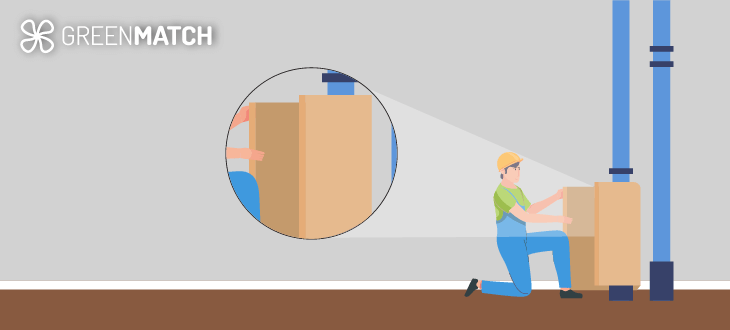
Pipe insulation is a DIY task that involves wrapping pipes with foam sleeves or applying insulating tape. These materials are simple to install and require minimal tools and expertise. This straightforward project helps prevent heat loss, reduces energy bills, and protects pipes from freezing in cold weather, making it a practical and cost-effective option for most homeowners.
Draught-proofing
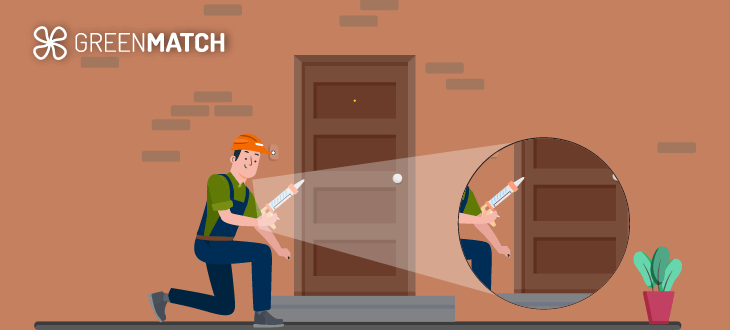
Draught-proofing is an ideal DIY project because it involves simple tasks like applying weatherstripping around doors and windows, sealing gaps with caulk, or using door sweeps—all of which require basic tools and minimal skill. These easy fixes can be done quickly and affordably, making a noticeable difference in reducing drafts and improving energy efficiency in your home.
By addressing these areas, you can take significant steps in how to insulate your house effectively, improving energy efficiency and comfort while saving on energy costs.
Areas of the house that necessitate professional installation
When considering how to insulate your house, it's important to recognise that some areas are best left to professionals. These spaces often involve complex installations, specialised materials, or the need for precise techniques to ensure safety and effectiveness. Here we talk about the areas of your home where professional insulation installation is strongly recommended.
Solid wall insulation

Solid wall insulation can be a complicated process that involves adding insulation to the walls' exterior or interior. When installing external insulation, first install the insulation boards, followed by rendering or cladding. Complete these steps precisely to avoid moisture build up or structural damage.
On the other hand, internal insulation can reduce room size and requires careful installation to prevent cold bridging, where heat bypasses the insulation and escapes through the walls. Due to the technical nature of these installations and their potential impact on your home's appearance and structure, seeking professional expertise is essential.
Professionals assess the walls, select the right materials, and install the insulation correctly and safely. This also includes addressing potential issues like dampness, which could compromise the insulation's effectiveness.
Cavity wall insulation
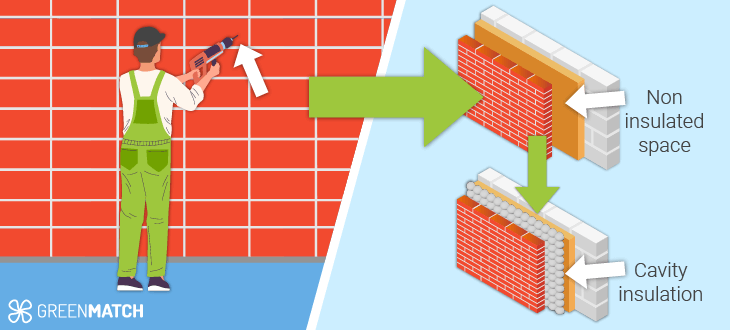
Cavity wall insulation involves injecting insulation material into the gap between the inner and outer walls. The process requires specialised equipment and expertise to fill the cavity evenly and completely. Improper installation can create gaps that reduce insulation effectiveness and may even cause damp problems by trapping moisture within the cavity.
Professionals use correct techniques and materials to ensure even insulation distribution, preventing issues like cold spots or moisture ingress. They can also identify if your home is suitable for cavity wall insulation or if other solutions might be better.
Flat roof insulation

Insulating a flat roof is quite challenging as it necessitates effective insulation and proper waterproofing. This involves installing insulation boards or layers beneath or above the roofing material while ensuring the roof remains watertight.
Improper installation can result in leaks, structural damage, and eventual roof failure. Hence, it is advisable to entrust flat roof insulation to professionals who ensure correct installation and maintenance of the roof's integrity. A professional can assess the roof's condition, choose the appropriate insulation method (warm or cold roof), and ensure that all work complies with building regulations and standards.
Spray foam insulation
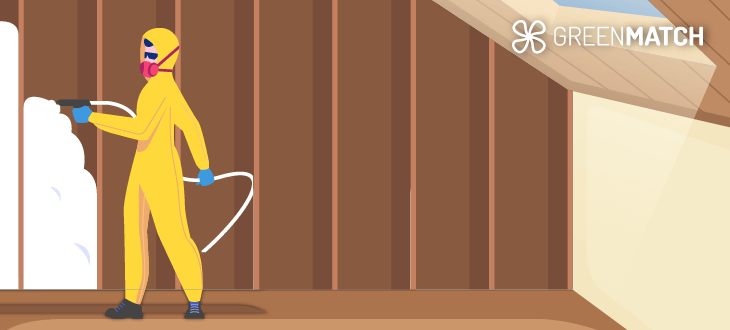
Spray foam insulation offers excellent thermal performance and air sealing but requires specialised equipment and expertise to apply correctly. The installation involves spraying liquid foam that expands and hardens in place, creating an airtight seal. Improper application can create gaps, cause uneven coverage, and pose health risks from off-gassing if the foam isn’t mixed or applied correctly.
Professionals apply spray foam insulation safely and effectively, maximizing its benefits without compromising air quality or structural integrity. They can also assess whether spray foam is the best choice for your home or if other insulation methods might be more appropriate.
Considerations of DIY insulation installation
When considering how to insulate your house, you may be tempted by the cost savings of a do-it-yourself (DIY) approach. Installing insulation yourself can save on labour costs and be effective for certain areas, but in some cases, hiring a professional is highly recommended.
Below are the potential problems that can occur when opting for a DIY insulation approach:
- Improper Installation: The thermal barrier will be incomplete if insulation is not installed evenly or if gaps are left between sections. Additionally, a DIY installer might overlook areas that can cause thermal bridging, whereby heat bypasses the insulation through structural elements like studs or joists. This creates cold spots in the home, reducing overall thermal efficiency and comfort.
- Fire and safety hazards: Using the wrong type of insulation in specific areas, such as near electrical wiring or heat sources, can create fire hazards as some insulation materials are flammable. Additionally, some insulation materials, particularly spray foam, can release volatile organic compounds (VOCs) if not applied correctly. This can lead to poor indoor air quality and health issues. Hiring professionals with the equipment and expertise to use these materials safely is essential.
- Moisture issues: Improperly installed insulation can block ventilation paths, leading to trapped moisture. Over time, this can cause condensation, which may result in mould growth and wood rot, severely damaging the structure of your home and posing health risks. Certain materials are also susceptible to dampness; if there is a leak or no moisture barrier installed, mould can grow within the insulation materials.
Recognising when professional installation is the better option is crucial for your home's energy efficiency. Even if you DIY some areas, collaborating with a professional can lead to more effective decisions. Investing in professional installation can save you money long-term by avoiding costly repairs and ensuring your home remains comfortable and energy-efficient.
Connect with the best insulation installers through GreenMatch to meet your needs and budget. Fill out our 30-second form for four free quotes without hidden costs or obligations. Click below to find out more.
Fill in the form in just 1 minute
How to insulate your house on a budget
Insulating your house is one of the most effective ways to improve energy efficiency, reduce heating and cooling costs, and enhance overall comfort. However, the cost of insulation can add up quickly, especially if you’re planning to insulate multiple areas of your home. On average, you can spend around £12,930 to insulate an entire 3 bedroom semi-detached home.
However, there are several ways you can insulate your home on a budget allowing you to achieve significant energy savings without breaking the bank.
Prioritise areas
Focusing on the areas within your home causing the most heat loss can make a big difference. If your budget is limited, tackle insulation projects incrementally, starting with the most critical areas first and gradually improving other parts of the house over time.
For example, insulating your attic will significantly reduce yearly heat loss. Another way to insulate your house is by draught-proofing your home and insulating your hot water tank, radiators, and pipes. These cost-effective methods can help improve your home's energy efficiency without costing a fortune.
Insulate your loft yourself
Many insulation tasks, like insulating the attic, sealing drafts, and insulating pipes, can be completed as do-it-yourself projects. By doing the work yourself, you can save significantly on labour costs, which can average up to £250 per person per day and make up a large portion of the overall expense.
Choose affordable insulation materials
Numerous affordable insulation materials, such as fibreglass, are priced at £10 per m2. It is the cheapest material, easy to install, and has an adequate R-value. Other affordable insulation materials include cellulose and rigid foam board insulation. However, it is essential to consider which materials are suitable for the type of insulation you need and those that closely match your requirements, such as sustainability and good thermal efficiency.
Grant schemes
The UK government offers home insulation grants, which can significantly reduce the cost of your home insulation. Check with your local authority to see if you are eligible for any of these grant schemes.
Buy in bulk
If you plan to insulate multiple areas of your home, consider buying insulation materials in bulk. Many suppliers offer discounts for bulk purchases, which can reduce the overall cost of your project.
Maintain existing insulation
Enhance the effectiveness of your current insulation by adding an extra layer or replacing sections that have settled or degraded over time. Also, save on future expenses by regularly checking the existing insulation for gaps, moisture damage, or compression and promptly addressing any issues.
Compare multiple quotes
Comparing multiple quotes for home insulation allows you to secure the most competitive pricing, reducing costs without sacrificing quality. You can pinpoint contractors offering the best value for the required materials and services by carefully assessing different offers.
This process also gives you the leverage to negotiate better terms or discounts. Multiple quotes safeguard against unnecessary upselling, guaranteeing that you only pay for what's essential. Ultimately, this approach optimises your budget, allowing you to insulate your home efficiently at a reduced expense.
At GreenMatch, we understand that your time is valuable. Instead of wasting hours comparing quotes with minimal results, fill out our 30-second form and receive four free, non-binding quotes. We are dedicated to promptly connecting you with the finest insulation contractors in your area. Click below to find out more.
Fill in the form in just 1 minute
FAQ
You can insulate your house cheaply by focusing on DIY projects like loft insulation, sealing draughts, adding insulation jackets to hot water tanks and insulating your pipes. Additionally, look for affordable insulation materials like fibreglass and take advantage of home insulation grants.
To insulate your house from the inside, you can use the cold roof insulation method by installing insulation materials in your loft space and placing them on the attic floor to keep the loft space cool. Additionally, you can insulate your home’s radiators and seal the gaps around the windows and doors to improve overall insulation.
You can insulate your house by doing DIY projects such as installing insulation in the attic, sealing drafts around windows and doors, and insulating pipes. These tasks are doable with basic tools and materials, allowing you to enhance energy efficiency and save on labour costs.
Avoid putting loft insulation directly over electrical cables, as it can cause them to overheat. Additionally, do not block ventilation areas such as eaves or vents, as this can lead to moisture build up and condensation issues in the loft.

Caoimhe is an experienced content writer and researcher who is passionate about providing accessible information to every reader. With a background in English literature and Sociology, she combines the two disciplines to create cohesive, well-thought-out, and well-informed pieces.
We strive to connect our customers with the right product and supplier. Would you like to be part of GreenMatch?

